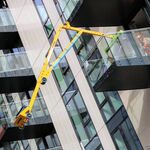Ward8
Active Member
Fully agree.Fundamentally wrong.
And even comically absurd.
GO's Lakeshore East corridor runs almost entirely parallel to the 401 here, the answer to alleviating traffic in this corridor is self-evident, 15-minute (or better), all-day GO
Service, lower GO Fares, lower-regional fares for TTC-DRT connections, and more frequent DRT service.
When all of that is done, along w/the Bomanville extension of GO then, and only then, should we revisit the idea of widening the 401, and then, only with great reluctance.
We need to be organizing transportation infrastructure and zoning reform in a way that leads to future lane reductions. That should be the ultimate goal.





